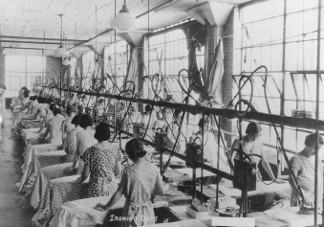GARFIELD, JAMES ABRAM (19 Nov. 1831-19 Sept. 1881), 20th president of the U.S., was born in Orange Twp., Cuyahoga County, Ohio, to Abram and Eliza Ballou Garfield. Fatherless at age 4, Garfield worked as a farmer, carpenter, and canal boatman. He studied at Geauga Seminary in Chester, Ohio, Western Reserve Eclectic Institute (now Hiram College) from 1851-54, and graduated from Williams College in Massachusetts in 1856. He returned to Hiram to teach classics and served as its president (1857-61), while also being a lay minister in the DISCIPLES OF CHRIST church. In 1859 he was admitted to the bar and elected to the Ohio senate. Garfield was commissioned as lieutenant colonel in the 42d Ohio Regiment in 1861. After defeating superior forces at Middle Creek, Ky., in 1862, he was promoted to brigadier general, and after winning distinction at Chickamauga, becoming a major general. Garfield resigned his commission in Dec. 1863 after being elected to the U.S. House of Representatives where he served for 17 years. In Jan. 1880, Garfield was elected to the U.S. Senate, but before his term began, attended the Republican Convention in Chicago as campaign manager for John Sherman of Ohio. Garfield, however, became the candidate for president, nominated on the 36th ballot as a compromise between former president Ulysses S. Grant and Sen. Jas. G. Blaine. Chester Alan Arthur of New York was his running mate, opposing Democratic candidates Winfield Scott Hancock and Wm. H. English. Headquarters for the campaign were in Cleveland, but Garfield spent most of the time receiving delegations at his home, "Lawnfield," in Mentor, Ohio. Garfield won the election by less than a 10,000-vote plurality, but garnered 214 of the 369 electoral votes. Garfield, confronted with problems of patronage, spent most of his time in office trying to ameliorate the two conflicting factions within his party. Indebted to Blaine for election support, Garfield appointed him secretary of state, angering Roscoe Conkling who unsuccessfully attempted to block Senate approval; the Senate confirmed the appointment, and Conkling resigned from the Senate. On 2 July 1881, while on his way to a Williams College reunion, Garfield was shot at the Washington, D.C. railroad station by Chas. Julius Guiteau, a disappointed office seeker. Garfield suffered agonizing attempts by various physicians to save his life before he died on 19 Sept. 1881 at Elberon, N.J. He was buried at LAKE VIEW CEMETERY in Cleveland, and the GARFIELD MONUMENT was erected to his memory in May 1890. Garfield married Lucretia Rudolph in 1858 and had seven children: James R., Harry A., Irving M., Edward, Eliza A., Mary (Mollie), and Abram.
Peskin, Alan. Garfield (1978).
James A. Garfield Papers, WRHS.
Finding, aid for the James A. Garfield Family Papers. WRHS.
Finding aid for the James A. Garfield Family Papers, Series II. WRHS.Last Modified: 23 Aug 2012 12:01:37 PM
- Related Article(s)









